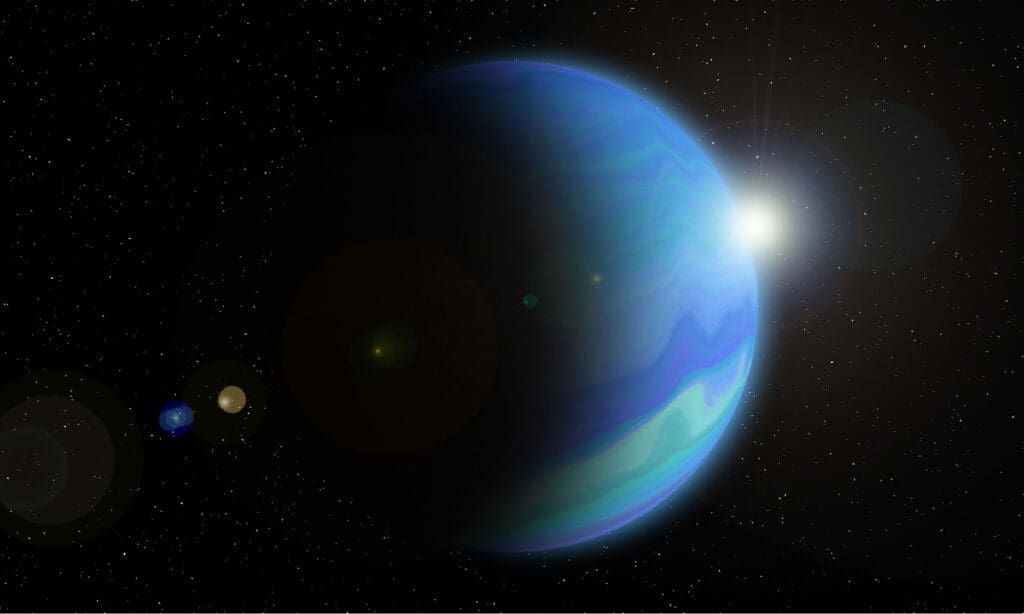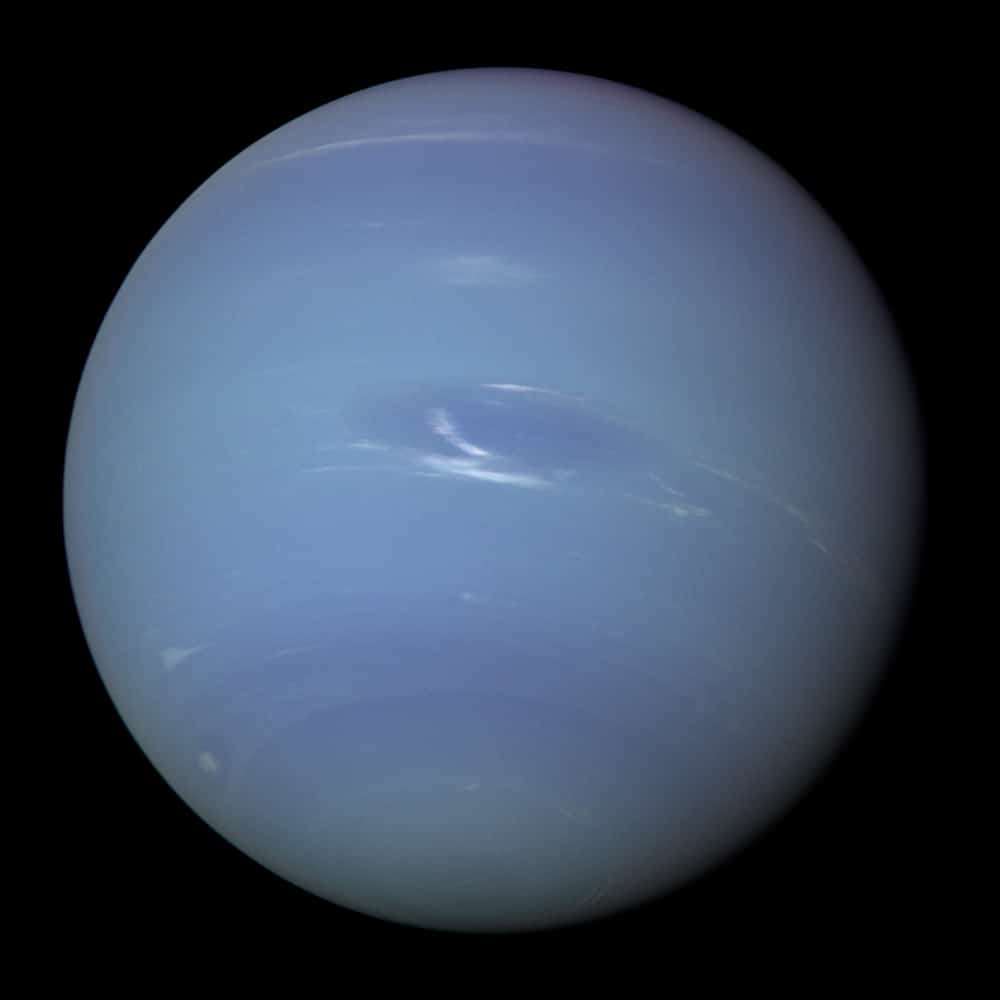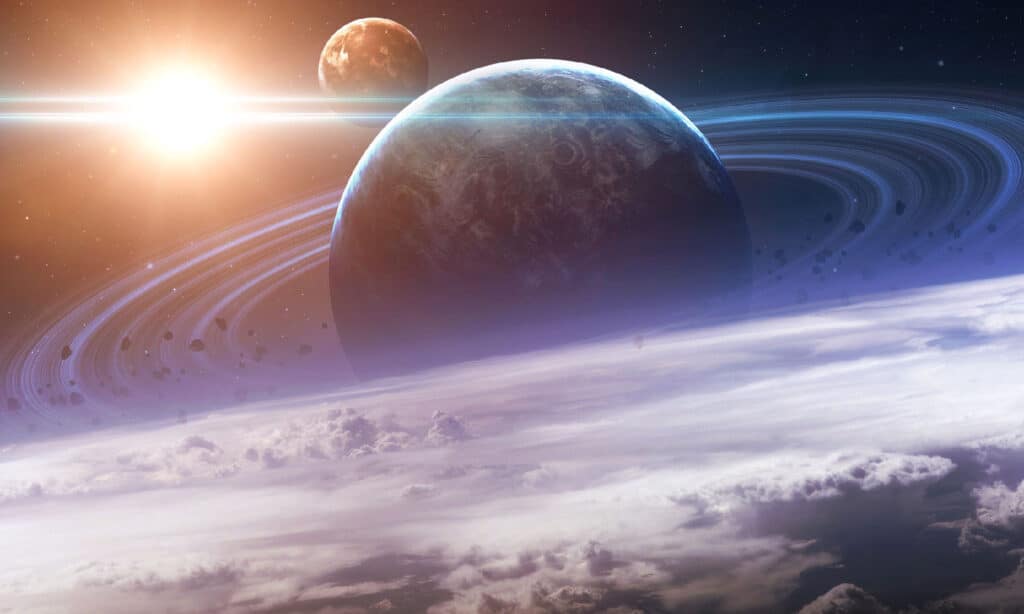The natural flow of air or other gases relative to the surface of a planet is known as wind. Winds occur on various scales, from thunderstorm flows lasting tens of minutes to local breezes caused by land-surface heating that last a few hours, to global winds caused by differences in solar energy absorption between climate zones. In space, the solar wind is the outgassing of light chemical components from the Sun across space, whereas planetary wind is the flow of gases or charged particles from a planet’s atmosphere into space. So, does this prove that other planets have wind, and which one is the windiest?
We can’t see the wind, and we’ll never be able to catch it. However, it can be rewarding, whether we have a new kite, want to play in the waves, or simply need to cool off on a hot summer day. Wind does not only occur on Earth, and although there are other windy planets in the solar system, Neptune’s winds are the fastest. Below, we will explore the windiest planet in our solar system, why it is so windy, and other fascinating facts.
Which Planet is the Windiest?

The windiest planet in our solar system is Neptune.
©iStock.com/buradaki
Neptune is our solar system’s windiest planet. The winds on Neptune can be three times stronger than those on Jupiter and nine times stronger than those on Earth, despite its considerable distance from the Sun and limited energy intake. At speeds of over 1,200 miles per hour (2,000 kilometers per hour), these winds whisk clouds of frozen methane across the planet. Even the strongest winds on Earth are only about 250 miles per hour (400 kilometers per hour).
At first glance, Neptune appears to be a calm sapphire paradise. But don’t be fooled by its serene azure hues: the eighth planet from the Sun is a rogue. Cloudy bands and enormous gyres appear as dark smudges on the surface of that tranquil sapphire expanse, revealing part of the spinning mayhem below it.
Powerful winds constantly circle the planet. In fact, one spot had a storm developing for five long years. In 1989, Voyager 2 captured a “Great Dark Spot” that may have fit the entire Earth inside. Although that storm has passed, new ones have appeared in various parts of the planet. Astronomers reported for the first time in March of 2019 that they had witnessed the formation of one of Neptune’s massive storms. The newborn storm, nearly as large as the maelstrom seen by Voyager, appeared to form bright white clouds between 2015 and 2017 before becoming a full-fledged gyre in 2018.
Why is Neptune so Windy?

The heat driving the winds on Neptune generates twice as much energy as it receives from the Sun.
©iStock.com/suman bhaumik
It’s unclear what causes these extreme wind speeds, but the heat from deep within the planet could be why. The heat driving the winds on Neptune, which generates twice as much energy as it receives from the Sun, could come from water vapor in the atmosphere condensing into clouds. However, because those lower depths are covered beneath those dense layers of clouds, it was unknown how deep those winds went until now.
Whether the dark areas on Neptune are cyclonically rotating storms or atmospheric holes, the planet’s atmosphere is extraordinarily active, with temperature fluctuations and breakneck wind speeds. Neptune, like Jupiter and Saturn, emits more heat than it receives. As a result, it has a substantial internal heat source. Neptune’s internal heat source contributes to vertical convection, extraordinary wind speeds, and the blue planet’s overall dynamics.
Is Neptune Capable of Supporting Life?

Neptune can not support life.
©iStock.com/PandaWild
The atmosphere of Neptune is inhospitable to life as we know it. The severe temperatures, pressures, and materials that characterize this planet are unlikely to allow creatures to adapt.
On Earth, we find life everywhere there is water. Whether it’s hundreds of meters below ground, inside nuclear reactors, or inside glaciers, there is life as long as there is water. Of course, it is only microbial life, but life nonetheless.
To establish life on Neptune, the planet must have a source of energy that bacteria can use and a constant supply of liquid water. Neptune’s surface temperature drops to 55 degrees Kelvin, and that’s extremely cold, and liquid water isn’t possible. Temperatures and pressures rise as you descend further into Neptune’s interior. And there may be a point on the planet where water remains a liquid and life can exist. Of course, this place would be hundreds of kilometers beneath the surface, making research impossible. As a result, it will have to remain a mystery for the time being.
What Beauty Does Neptune Hold?

Although they aren’t as intricate as those seen in orbit around Saturn, Neptune has a set of faint rings.
©Justin Cowart / public domain – Original
Neptune is a fascinating world of superlatives as our solar system’s windiest, farthest, and faintest planet. Neptune’s atmosphere contains methane, absorbing red light and reflecting blue, giving the planet its alluring blue glow. The planet appears to be a deeper, more dazzling blue in most photographs than Uranus, which appears to be a faint turquoise dot. On the other hand, Neptune is most likely as pale as its neighbor and appears darker in photographs due to its greater distance from the sun. Nonetheless, NASA believes that there may be another, unknown component of Neptune’s atmosphere that gives the world a slightly distinct tint.
Neptune also has a set of faint rings, although they aren’t as intricate as those seen in orbit around Saturn. The three primary ones are named after astronomers credited with discovering the planet, including Adams, Le Verrier, and Galle.
What Other Planets have the Most Wind?

©iStock.com/forplayday
The planets beyond Mars have the fastest winds of all the planets in the solar system, and it’s perplexing because there’s less solar energy available to drive more significant winds there.
Saturn is a “windy” planet, with atmospheric winds reaching 1,118 miles per hour, significantly higher than Jupiter’s. But Saturn, one of the four gas giants, has an atmosphere similar to Jupiter’s. Hydrogen makes up approximately all of the atmosphere, with helium, methane, and ammonia making up considerably smaller amounts. Saturn has ammonia ice crystal clouds, although their tops are far colder than Jupiter’s, at around -400 degrees F.
The photo featured at the top of this post is © NASA images/Shutterstock.com
Thank you for reading! Have some feedback for us? Contact the AZ Animals editorial team.







